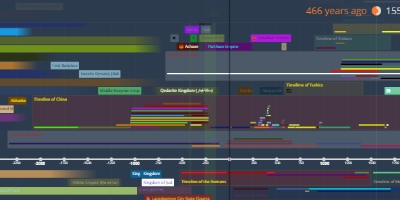Han Zhao/Former Zhao (漢趙/前趙) (jan 1, 304 – jan 1, 329)
Description:
The Han Zhao (simplified Chinese: 汉赵; traditional Chinese: 漢趙; pinyin: Hàn Zhào; 304–329 AD), or Former Zhao (simplified Chinese: 前赵; traditional Chinese: 前趙; pinyin: Qián Zhào), was a dynasty of Southern Xiongnu origin during Sixteen Kingdoms period of Chinese history coeval with the Sima clan's Jin dynasty. In Chinese historiography, it was given two conditional state titles, the Northern Han (北漢; Běi Hàn) for the state proclaimed in 304 by Liu Yuan, and the Former Zhao (前趙; Qián Zhào) for the state proclaimed in 319 by Liu Yao. The reference to them as separate states should be considered misleading, given that when Liu Yao changed the name of the state from "Han" to "Zhao" in 319, he treated the state as having been continuous from the time that Liu Yuan founded it in 304; instead, he de-established royal lineage from the Han dynasty and claimed ancestry directly from Yu the Great of the Xia dynasty.The reason it was also referred to as "Former Zhao" in historiography is that when the powerful general Shi Le broke away and formed his own dynasty in 319, the new regime by Shi Le was also officially named "Zhao" as well, and so in the Chinese historiography Shi Le's state is referred to as the "Later Zhao". Since both the Former Zhao and Northern Han were ruled the same family, the Chinese scholars often conditionally combined them into a single Han Zhao regime. Numerous Western texts refer to the two states separately; others referred to the Han state as the "Northern Han", a confusing nomenclature as the term also refers to the Northern Han in the later Five Dynasties and Ten Kingdoms period.
All rulers of the Han Zhao were titled emperors. Han Zhao rulers were all extremely intelligent and articulate, but some lacked self-control and demonstrated excessive cruelty on the battlefield. Particularly typical of this pattern of behavior was Liu Cong (Emperor Zhaowu), who was clearly able to discern good strategic plans from bad. He would sometimes indulge himself on wine and women, and his patterns of erratic behavior often resulted in deaths of honest officials. Han Zhao was considered to be a state that never fully realized its potential, it had a right mix of talent among its officials, and its armies were extremely powerful especially when utilized properly, but it would not always complete the conquests that its emperors envisioned, and eventually fell to its formal general Shi Le.
The Han Zhao armies sacked the Jin dynastic capitals of Luoyang in 311 and Chang'an in 316. Emperor Huai and Emperor Min of the Jin were captured, humiliated and executed. Remnants of the Jin court fled to Jiankang, located east of Luoyang and Chang'an, where the Emperor Yuan founded the Eastern Jin dynasty.
In 318, Liu Can and the imperial Liu clan at Pingyang were toppled and executed by the coup d'etat of Jin Zhun, who was in turn overthrown by Shi Le and Liu Yao. Liu Yao, as an imperial prince, claimed the throne and changed the dynastic name from "Han" to "Zhao". The Han Zhao dynasty lasted until 329, when Shi Le defeated Liu Yao at the Luo River. Liu Yao was captured and executed. His sons were executed a year later.
Added to timeline:
Date:
jan 1, 304
jan 1, 329
~ 25 years
